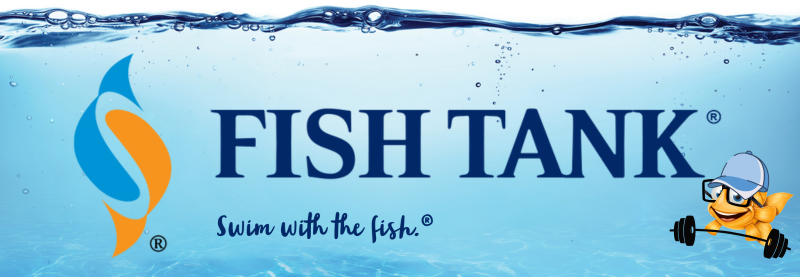Intellectual Property Insights from Fishman Stewart PLLC
Newsletter – Volume 24, Issue 28
Share on Social

Cracking Nature’s Code: How AI is Revolutionizing Science
Artificial intelligence has long been heralded for its transformative potential, but this year’s Nobel Prize in Chemistry offers a glimpse of how AI is already reshaping our understanding of the natural world. The laureates Demis Hassabis and John Jumper of DeepMind, along with David Baker of the University of Washington, were recognized for their groundbreaking advancements in decoding protein structures—a pursuit that once took years of painstaking research but now can be accomplished in mere minutes.
Proteins, the molecular workhorses of life, are integral to nearly every biological function. They catalyze chemical reactions, provide structural support, and facilitate communication within and between cells. Their complex, three-dimensional structures dictate how they interact with other molecules, and these interactions are critical to understanding diseases and developing therapies.
Historically, determining a protein’s structure required years of experimentation. Tools like X-ray crystallography, pioneered by Nobel laureates John Kendrew and Max Perutz in the 1960s, were revolutionary but labor-intensive. By 2020, despite decades of effort, the Protein Data Bank held just 185,000 experimentally solved structures.
Enter AlphaFold, an AI-powered tool developed by DeepMind. Using machine learning trained on vast repositories of protein data, AlphaFold predicts protein structures with remarkable accuracy. Since its introduction, AlphaFold has mapped more than 200 million protein structures—virtually all catalogued proteins across species. This accomplishment is freely accessible through the AlphaFold Protein Structure Database and is accelerating research in fields ranging from drug discovery to vaccine development.
Consider the ongoing battle against malaria, a disease that claims over 600,000 lives annually. Researchers had struggled to design a vaccine targeting a key protein in the malaria parasite due to its elusive, shape-shifting nature. AlphaFold’s predictions provided clarity, enabling scientists to identify the most effective parts of the protein to target, advancing the vaccine from theoretical research to preclinical trials.
Other applications of neural networks in science are equally compelling. Researchers studying carbon capture and storage have employed AI to model carbon dioxide interactions with porous rock formations deep underground. This understanding is critical to designing safer and more effective long-term storage solutions to mitigate climate change. Similarly, AI has been used to predict the behavior of complex chemical catalysts, paving the way for more sustainable industrial processes by identifying the most efficient molecules for transforming raw materials into valuable products. Neural networks excel at identifying elusive, complex patterns, uncovering correlations beyond human observation.
These advancements also underscore the growing importance of intellectual property in the intersection of AI and science. For example, DeepMind’s innovations in AlphaFold involve a combination of patents (e.g., here, here, and here) and trade secrets that protect the underlying algorithms and machine learning methods. Meanwhile, the freely available AlphaFold Protein Structure Database presents a novel strategy: leveraging open access to promote collaborative research while retaining proprietary rights over the underlying AI technology. This approach allows companies to balance innovation incentives with public benefit, a critical consideration in the rapidly evolving field of AI-driven discoveries.
As neural networks and AI continue to tackle some of science’s most complex challenges, researchers and companies alike will need to carefully navigate the IP landscape. Robust patent protection, strategic use of trade secrets, and clear data-sharing policies will be essential to ensuring that breakthroughs like AlphaFold both reward innovation and advance the greater good.
With tools like AlphaFold leading the way, AI continues to push the boundaries of what we can achieve, driving solutions to some of the world’s most pressing scientific challenges. By decoding the building blocks of life, AI is not just reshaping industries, it’s illuminating the future of human innovation.
James W. Taylor, II is a patent attorney at Fishman Stewart with expertise in applying artificial intelligence to complex scientific problems. With a background in chemistry, computer science, and law, James specializes in bridging the gap between AI solutions to complex scientific problems and intellectual property strategies for those solutions. Check out his full bio here.
Michael Stewart named 2024 ‘Mentor of the Year’ at AIPLA’s annual meeting
Fishman Stewart PLLC is pleased to announce that the AIPLA (American Intellectual Property Law Association) named Partner Michael Stewart 2024 “Mentor of the Year.” Nominated by the organization’s mentees and chosen by its Mentoring Committee, Stewart was presented the award for his outstanding commitment and contribution to the mentoring program and his positive influence on the growth and development of AIPLA members.
“What an unexpected honor to be recognized by my colleagues and friends at AIPLA!” Stewart said. “I am grateful to the next generation of practitioners for allowing me the opportunity to share my experiences, and in turn, to receive their unique insights of our profession.”
AIPLA membership is free for students and offers online resources and networking opportunities for anyone interested in IP.

Related Content from Fishman Stewart
People have long pondered whether or not the Giza pyramids were indeed solely burial chambers, which was the only known, and archaeologically determined, use—until now.
As the story goes, Klein was so taken with the indescribable blue of the sky over the Mediterranean in Nice, France, that he dedicated his artistic talent developing a blue that would imbue the canvas with this color in its purest form.
Despite her pseudo-legal background in Suits, Meghan has been running into one issue after another in her efforts to register the trademark and logo for her new lifestyle company, for now, called “AS EVER”.
By 1930, efforts began in New York to replace Mother's Day with Parent's Day because men were more than just breadwinners. Those efforts didn't catch on, probably because in that era, women often spent more time in the home.
In February, Nike and Skims announced that they will be working together on a new brand, NikeSkims. The co-brand will create a new line of training apparel, footwear, and accessories specifically designed to meet the unique needs of women athletes.
Generally, federal courts have exclusive jurisdiction over copyright cases, and often, this presents an insurmountable paywall for individual artists and small businesses to vindicate their rights, especially where the value of the individual copyrighted works are relatively low.
Dedicated to raising public awareness about the importance of encouraging innovation and creativity throughout the world, the World Intellectual Property Organization (WIPO) annually observes World Intellectual Property Day on April 26 to showcase the role that patents, trademarks, industrial designs, copyrights and trade secrets play in our everyday lives.
Hold onto your foam fingers, sports fans – college sports just got a whole lot more interesting! The latest updates to Name, Image, and Likeness (NIL) rules are making student-athletes bigger than ever, and it’s not just about the game anymore.
Did a federal court in Louisiana recently decide that US copyrights are global rights? It seems so.
L.A.B. Golf aims to protect its innovations, and therefore its market position, owning three patents for its zero-torque design. The question now is whether L.A.B. Golf can withstand the wave of copycat designs.
IDENTIFYING, SECURING AND ADVANCING CREATIVITY®

















